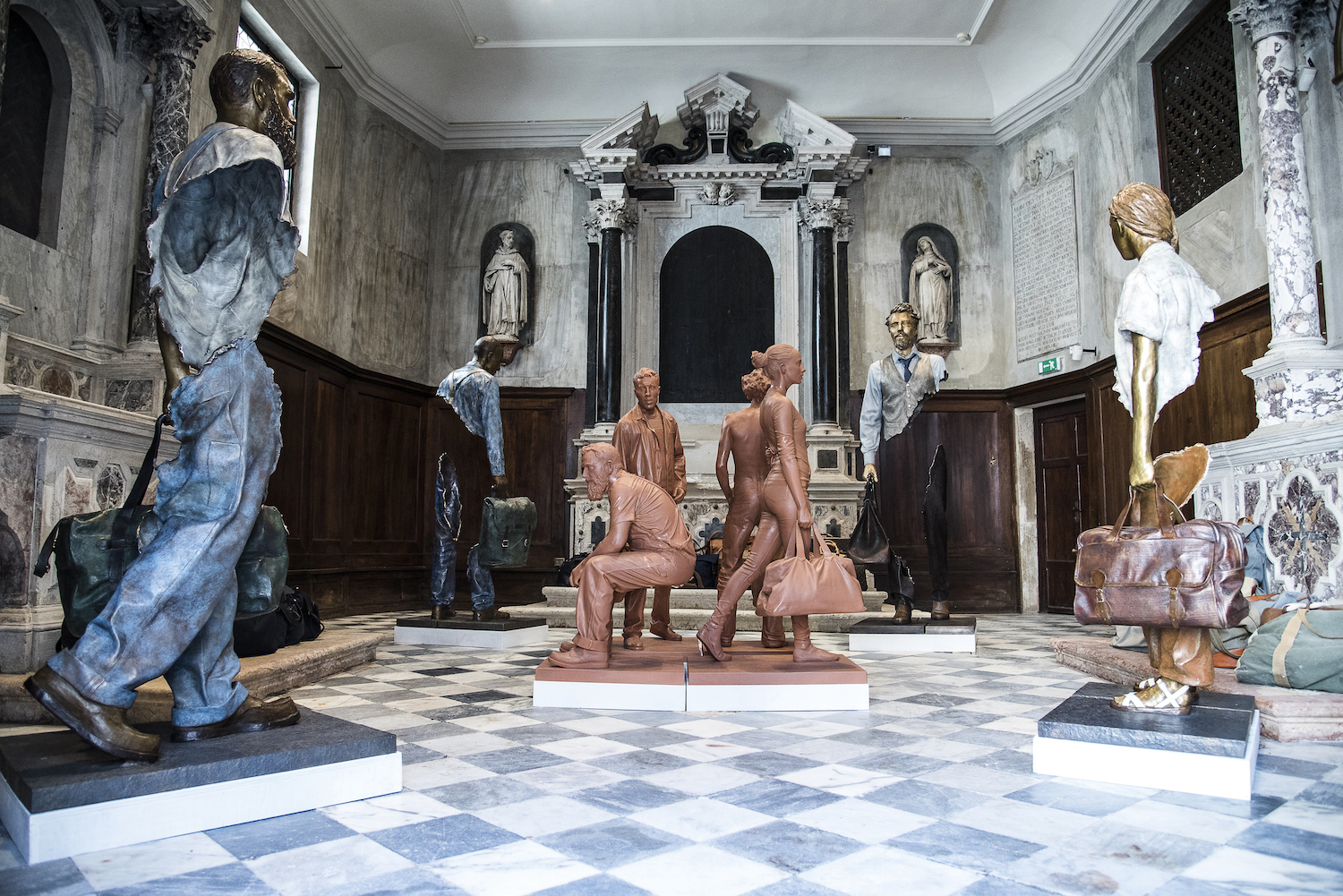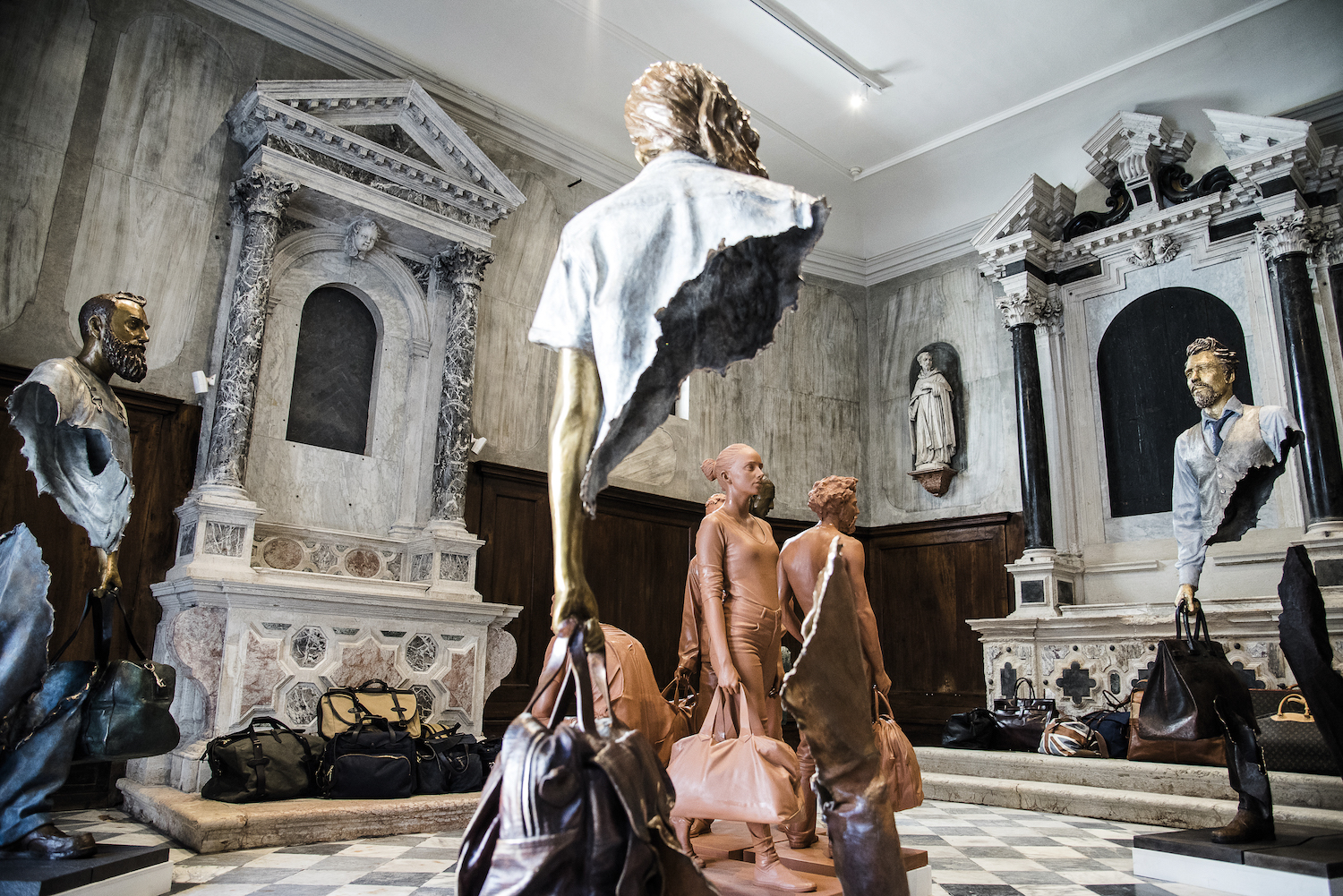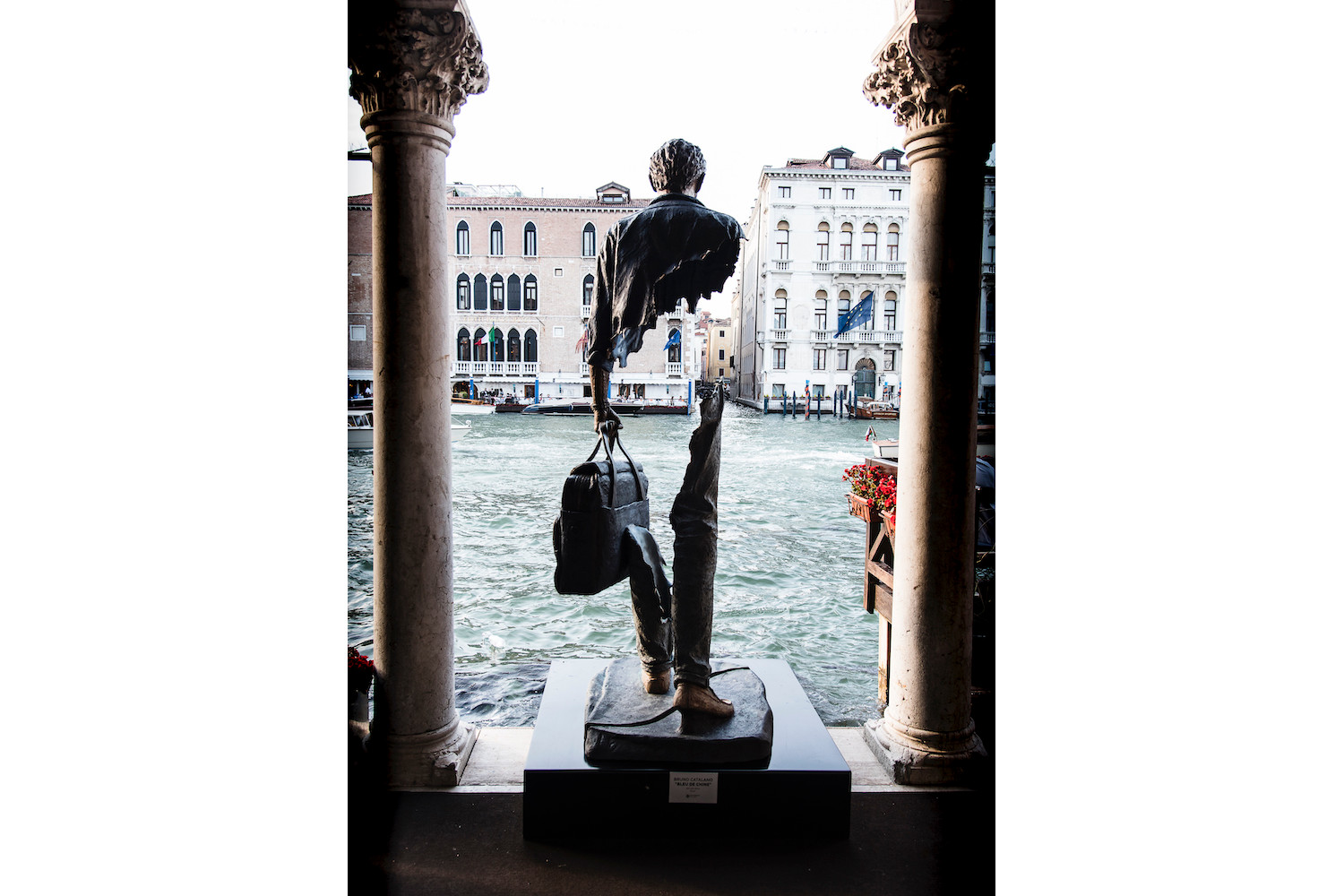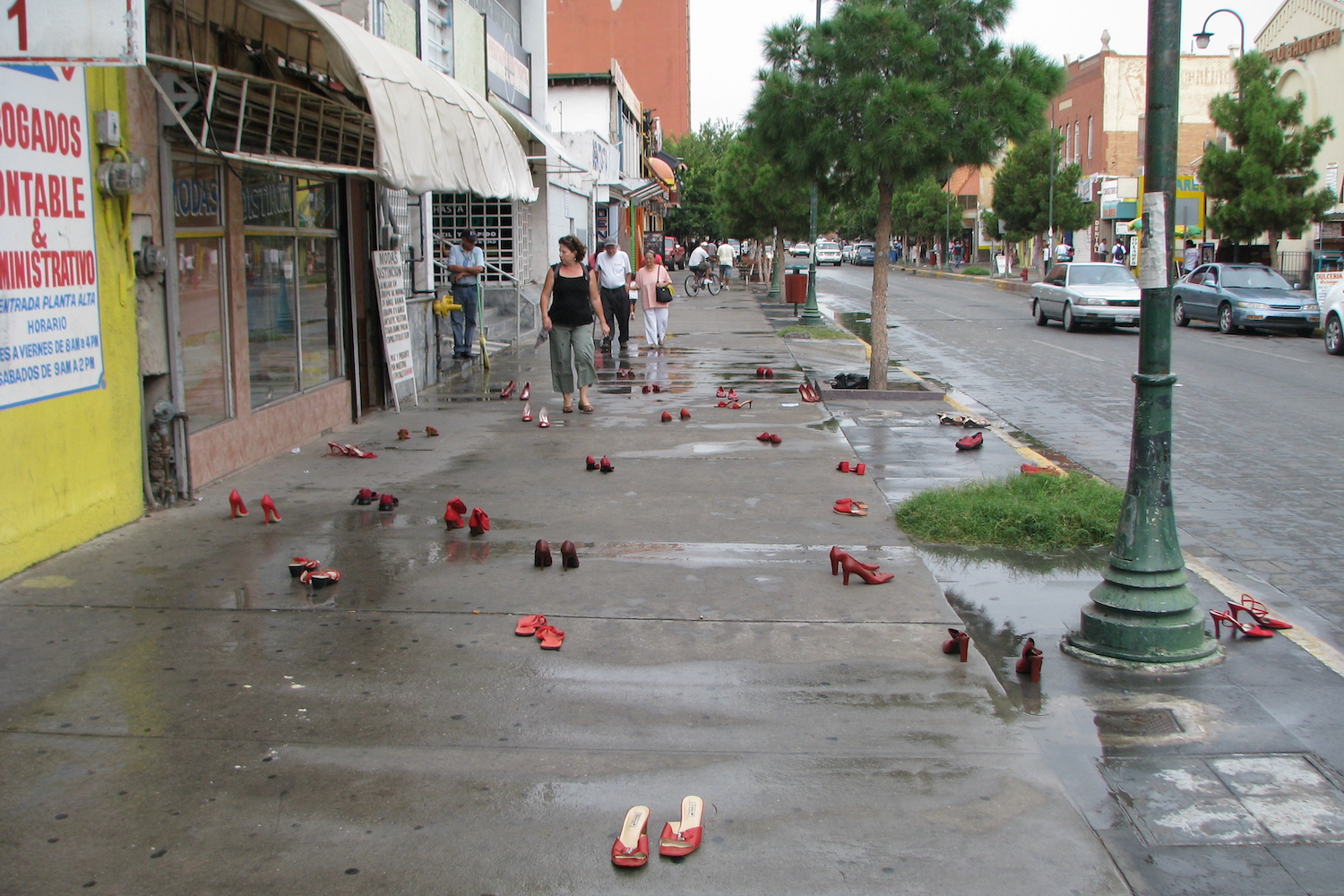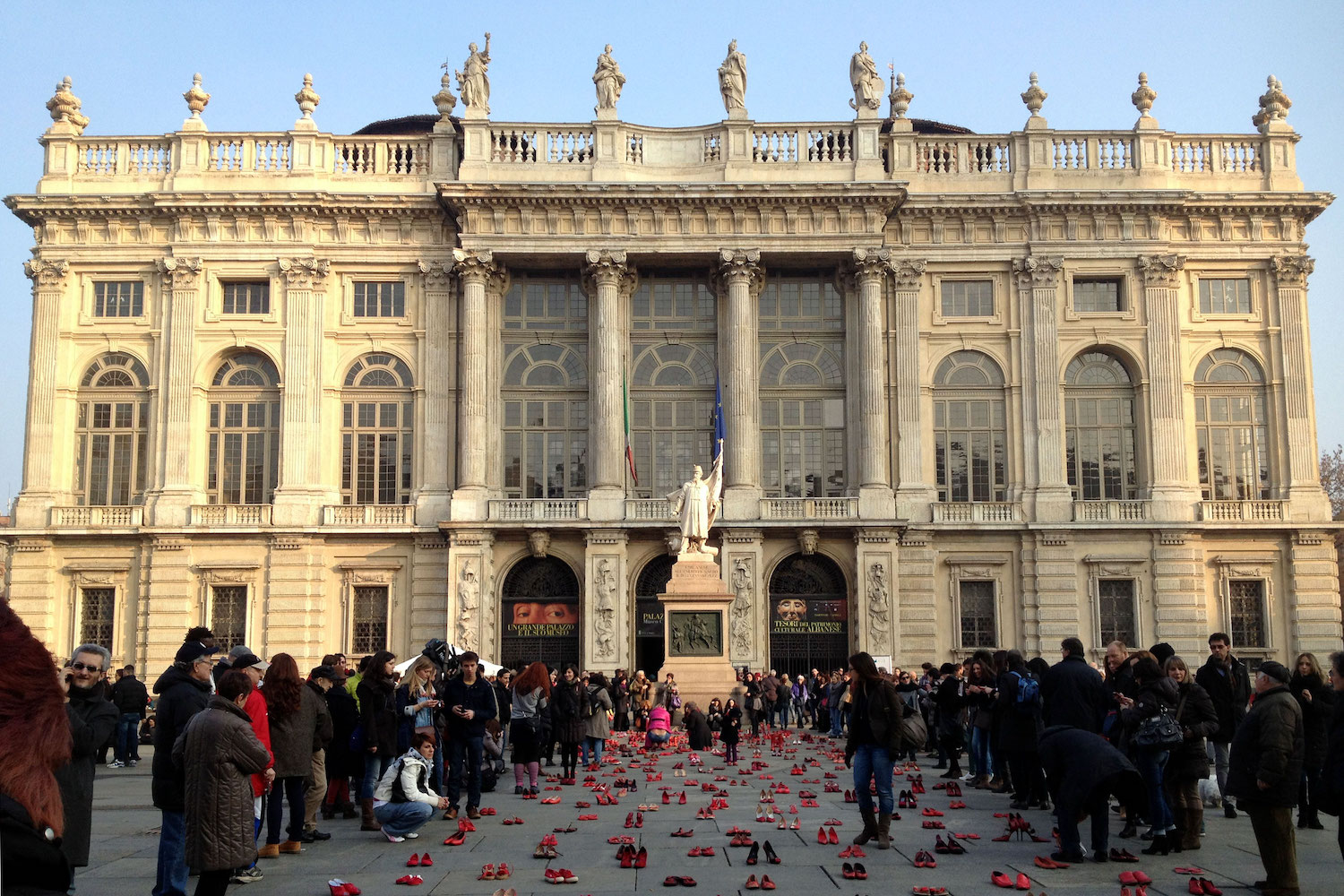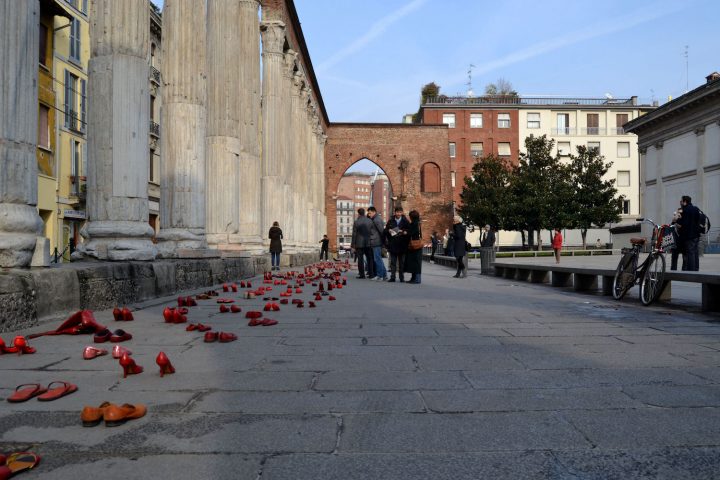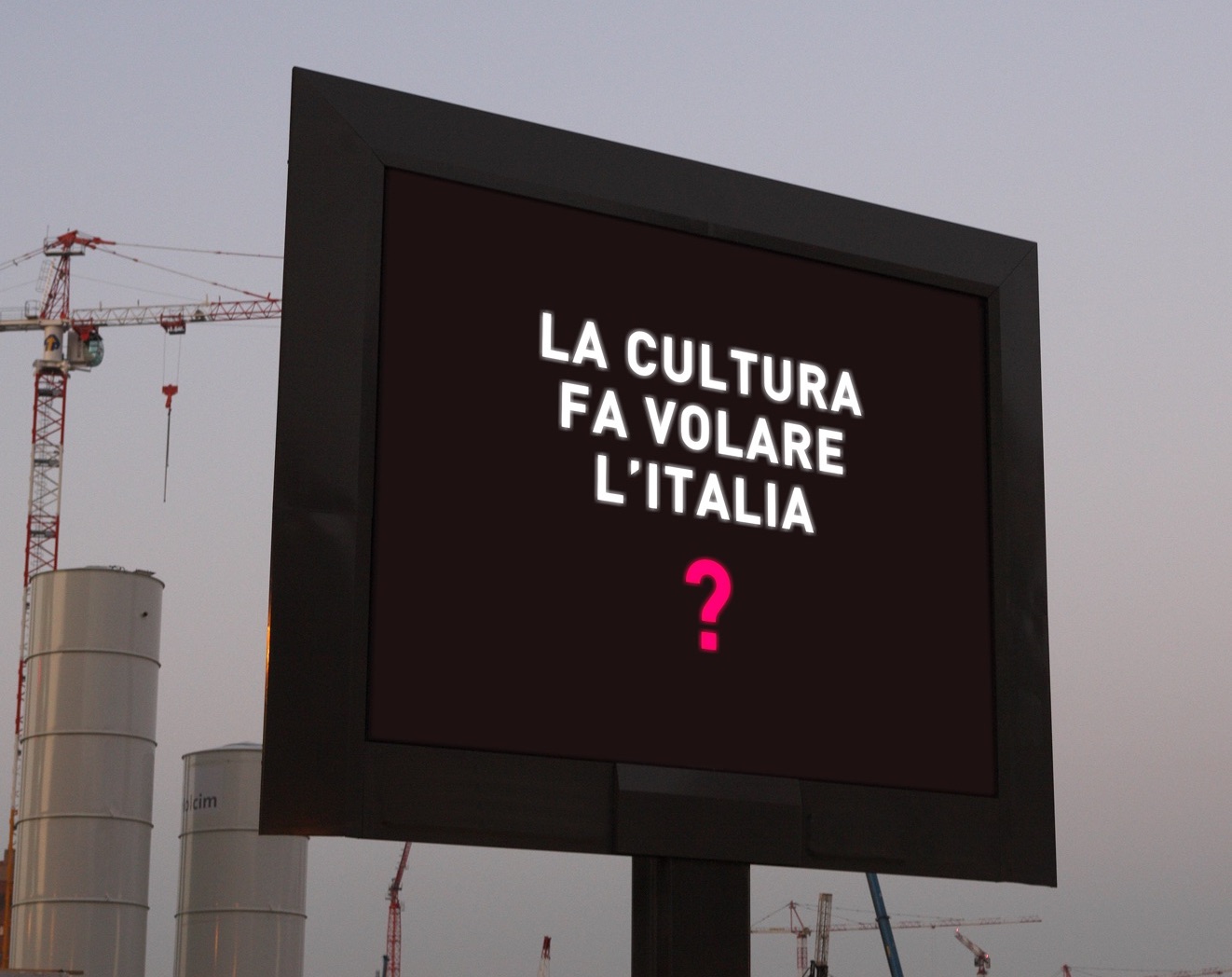“Public Art 2666” is a column that seeks to explore the interaction between the public domain and contemporary artistic practices, giving particular consideration to the resulting social impacts. The research is run by Collettivo 2666.
I
Óscar Amalfitano, title character of the second part of Roberto Bolaño’s 2004 novel, 2666, is a literature professor from Santiago de Chile who has lived in Buenos Aires, Paris, and Barcelona. Now, he teaches at the local university in the fictional Santa Teresa, Mexico, where he lives with his daughter Rosa. With a past marked by exile and love gone astray, and a present overshadowed by the threat of violence, Amalfitano looks feverishly inward as he adapts to Santa Teresa: the reader sees him sketching avant-garde experiments, ruminating over his past, and in the end even hearing voices. Near the end of “The Part about Amalfitano”, the professor recalls an encounter he once had in Barcelona with a young pharmacist who was reading a book.
One night, while the kid was scanning the shelves, Amalfitano asked him what books he liked and what book he was reading, just to make conversation. Without turning, the pharmacist answered that he liked books like The Metamorphosis, Bartleby, A Simple Heart, A Christmas Carol (…) He chose The Metamorphosis over The Trial, he chose Bartleby over Moby-Dick, he chose A Simple Heart over Bouvard and Pecuchet and A Tale of Two Cities over The Pickwick Papers. What a sad paradox, thought Amalfitano. Now even bookish pharmacists are afraid to take on the great, imperfect, torrential works, books that blaze paths into the unknown. They choose the perfect exercises of the great masters. Or what amounts to the same thing: they want to watch the great masters spar, but they have no interest in real combat, when the great masters struggle against that something, that something that terrifies us all, that something that cows us and spurs us on, amid blood and mortal wounds and stench. (Bolaño, 2016: 227)1
I would like to take this passage to begin a brief comparison of the relationship between literature and public art. In “The Violence of Public Art: Do the right thing” (1990), W. J. T. Mitchell draws a parallel between film and public art as forms that share two traits: one, space as a category – material, but also virtual – that mediates the relationship between communities and violence; the other, a common horizon of resistance.2 Taking this into consideration, I would like to sketch a reading of 2666 as public art: How can this work inform discussions about the tensions between space, aesthetics, violence, and communities?
II
Critics have read Amalfitano’s rumination as one of the many metacommentaries on the form of 2666,3 qualifying the novel as “monumental”. Its dimensions are one reason for the description: 2666 comprises a little over a thousand pages divided into five parts. The five parts are as follows: “The Part about the Critics”, in which European literary critics search for Austrian author Benno Von Archimboldi, whose last known whereabouts are in Mexico; “The Part about Amalfitano”, which focuses on Amalfitano’s life in Santa Teresa; “Fate’s Part”, dedicated to Quincy Williams – a.k.a. Fate – an American journalist investigating the femicides in Santa Teresa; “The Part about the Crimes,” dedicated to the narration of the murders; and lastly a “Part on the Life of Benno Von Archimboldi”, the author for whom the critics were looking in the first part. Knowing he was nearing the end of his life and wishing to guarantee his family economic support, Bolaño communicated his editor, Jorge Herralde and his friend, Ignacio Echeverría that he wanted each part to be published as an independent novel. However, after reading the manuscript, his editors decided that, in order to respect his literary legacy, it was best to publish the five parts as a whole. A comparison between manuscripts shows that the novel was near completion and only few corrections were needed.
In this “great, imperfect, torrential work”, space is a key element that drives plot. 2666 narrates different forms of global displacement: academic excursions, journalistic trips, political exile, economic migration. In 2666, the characters transcribe a variety of trajectories over multiple latitudes. As they do so, the risks of global displacement appear again and again, allowing, denying, or questioning the very nature of mobility. The critics travel seamlessly through Europe, before “Fate” escapes from Santa Teresa on his American passport, people migrate from Central America to work in Santa Teresa’s off-shore factories (maquilas) or to reach the USA.
If public art concerns itself with the links between space and community, then a first contention of 2666 is that it speaks of the world as space, and of displaced people as a community. In this sense, Bolaño’s work does not appeal to a heroic national imaginary, but rather to the shared sense of displacement that constitutes contemporary subjectivity.4
III
However, the concern with the world and displacement does not entail a flattening out of social inequalities. Focusing on one character each, the trajectories narrated in the first three parts of 2666 all end in Santa Teresa, giving the reader a glimpse on what is happening in the city. The fourth part of the novel does not focus on a single character, but instead zeroes in on the city itself. Like its real-world counterpart, Ciudad Juárez, Santa Teresa is on the border between Mexico and the USA, and its main economic activity is the maquilas.5 From 1993 to 19976, one hundred and nine femicides take place in Santa Teresa. The readers bear witness:
The girl’s body turned up in a vacant lot in Colonia Las Flores. She was dressed in a white long-sleeved T-shirt and a yellow knee-length skirt, a size too big. Some children playing in the lot found her and told their parents. One of the mothers called the police, who showed up half an hour later. The lot was bordered by Calle Pelaez and Calle Hermanos Chacon and it ended in a ditch behind which rose the walls of an abandoned dairy in ruins. There was no one around, which at first made the policemen think it was a joke. Nevertheless, they pulled up on Calle Pelaez and one of them made his way into the lot. Soon he came across two women with their heads covered, kneeling in the weeds, praying. Seen from a distance, the women looked old, but they weren’t. Before them lay the body. Without interrupting, the policeman went back the way he’d come and motioned to his partner, who was waiting for him in the car, smoking. Then the two of them returned (the one who’d waited in the car had his gun in his hand) to the place where the women were kneeling and they stood there beside them staring at the body. The policeman with the gun asked whether they knew her. No, sir, said one of the women. We’ve never seen her before. She isn’t from around here, poor thing.
This happened in 1993. (Bolaño, 354)7
How to address violence without trivializing it, falling into sentimentality, or glorification? In sculptural or architectural public art, elusive evocation can be a more moving strategy than straightforward depiction.8 However, the virtual nature of literature allows for other kinds of aesthetic operations. In depicting how the women were found, the narrator of 2666 opts for a writing akin to that of the forensic chronicler: we read in detail how the women were murdered, where their bodies found, and by whom, how the police arrived, along with other information. These cases take place in different parts of Santa Teresa over 400 pages. This sequence of murders draws a map, with two different effects. First, the differences between the cases shows how precarity is produced by multiple factors. In this sense, each case further complicates the image of violence against women.9 Second, if the depiction of trajectories in 2666 evokes a shared sense of displacement, then “The Part about the Crimes” intertwines this issue with the theme of systemic economic and political inequality at the global level.
IV
Two overarching topics structure 2666: literature and violence.10 The two topics converge in the main suspect of the femicides: a tall, blond man by the name of Klaus Haas, who lives in Santa Teresa and owns computer stores in the city. A series of continuities between Klaus Hass and Benno Von Archimboldi – nationality, physical description, itineraries – might suggest that the murders were perpetrated by a descendant of Archimboldi – or even by Archimboldi himself. It would appear that the search for Benno Von Archimboldi leads to the author of the one hundred and nine femicides. And while this is the strongest lead, the last we know of Benno Von Archimboldi is only that he “left for Mexico.” And yet, Mexico is not equal to Santa Teresa. By constructing 2666 as an ultimately failed crime fiction, the novel expounds the relationships between capitalist violence, which precariously structures life, and a legal and juridical infrastructure that fails to deliver justice. Also, by placing literature as an obstacle to the solution of the crimes, it produces a different kind of reflection. We do not know if Archimboldi is the murderer behind the femicides. If we ask the novel if he is, it defers answering, as if to say, “he may or may not be.” Thinking on 2666 as public art, this delay can be read as opening up a space for reflection, a space defined by the possible links between public art and justice.

